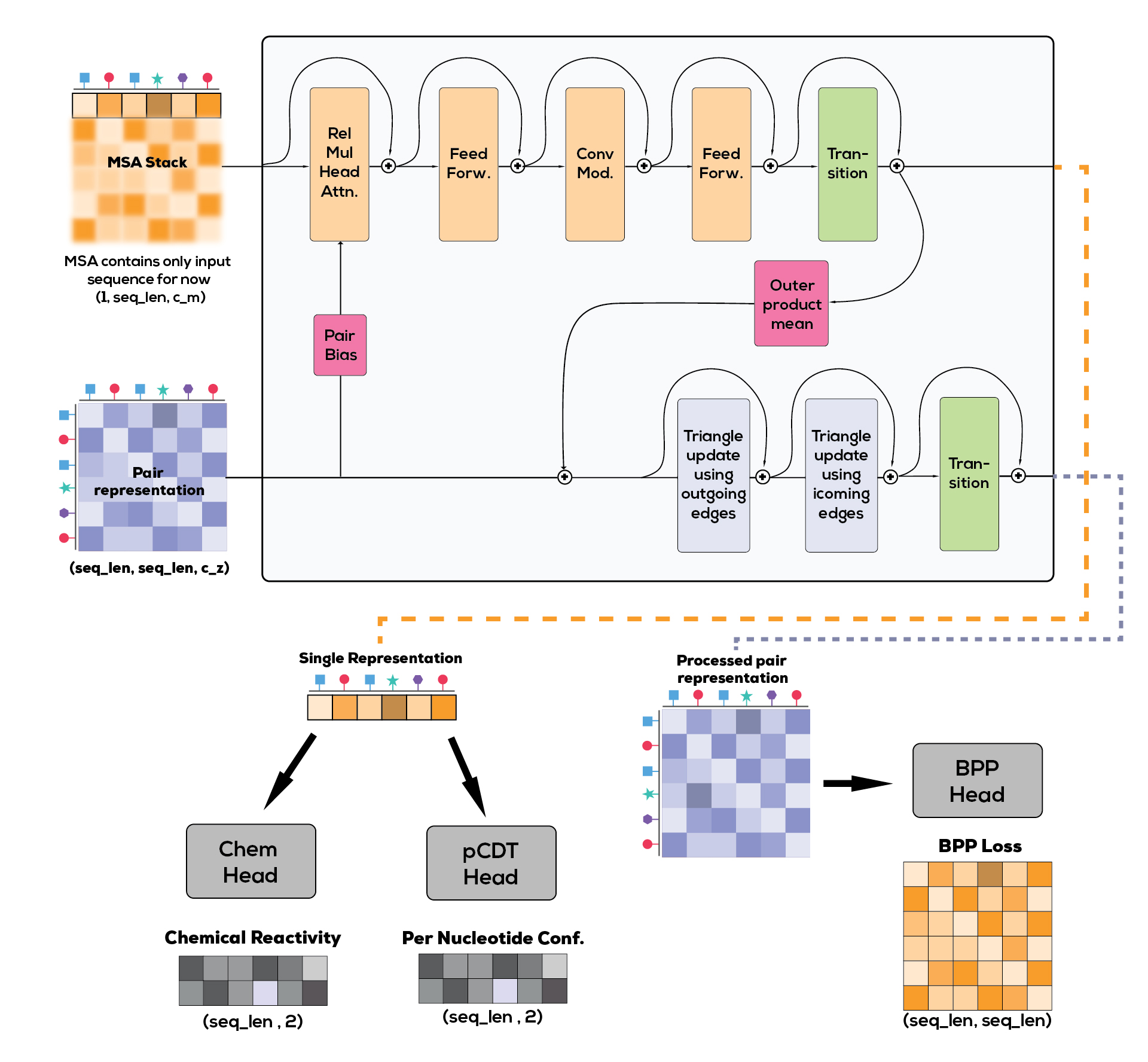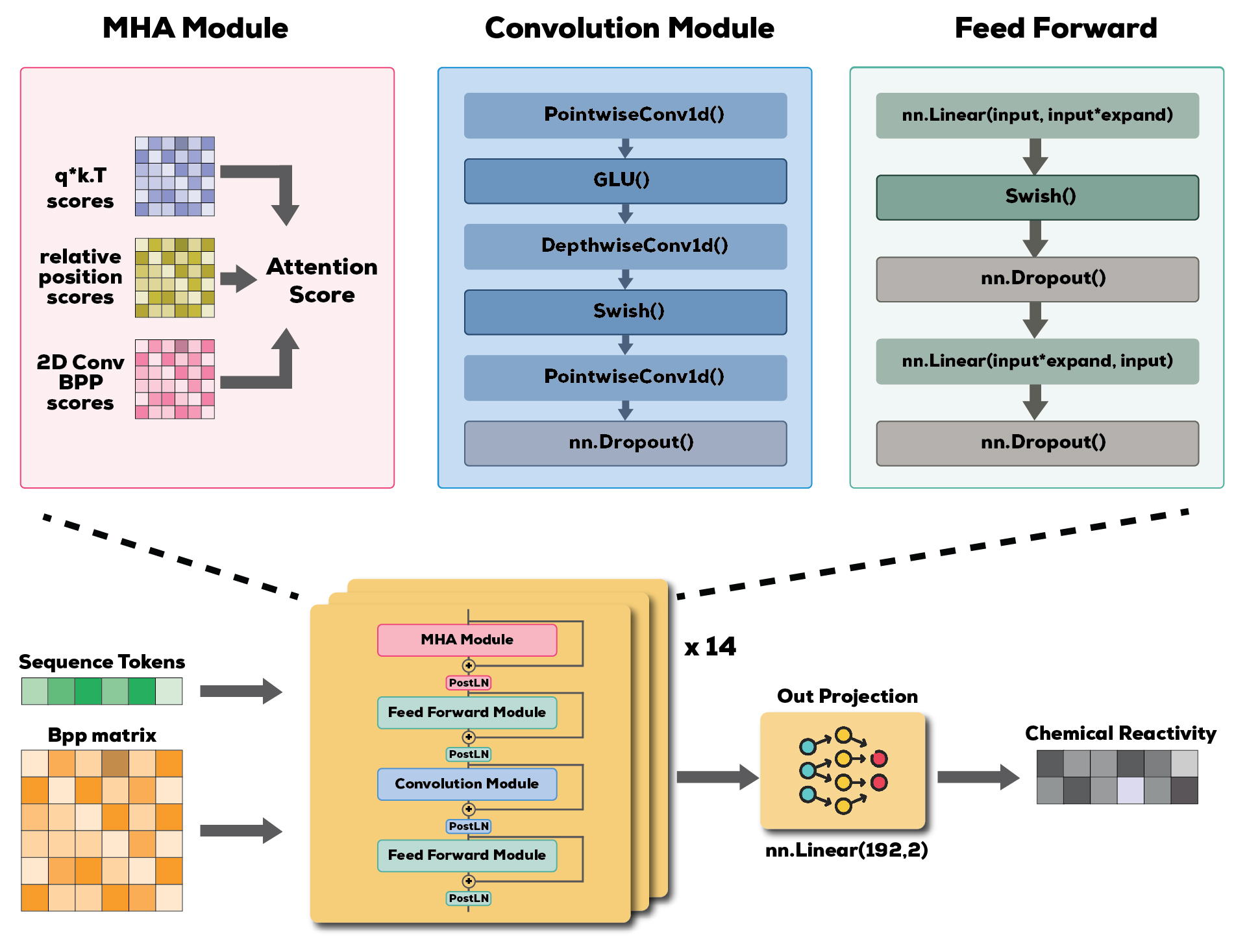Hello!
Below you can find a outline of how to reproduce 3rd solution for the Stanford Ribonanza RNA Folding competition. If you run into any trouble with the setup/code or have any questions please contact me at gosuxd1@gmail.com
Below is the architectures of the 2 models used for the final submission
Data should be downloaded from Kaggle competition website and placed under /datamount/. train_data.csv is then preprocessed with preprocess_dataset_to_parquet.py to create folded parquet file.
Optionally: preprocessed training_data.parquet and synthetic data used for final submission can be downloaded from gdrive for quick start in training.
Since BPP's take a lot of disk, they can only be downloaded from competitions website. Place them under datamount/supp_data and preprocessed with preprocess_bpps.py script to create a bpps_index.csv and .npz files that are being used in the training of the model.
python train.py -C cfg_1
python train.py -C cfg_1 -G 0 -batch_size 256 -lr 7e-4 -logging False
python train_ddp -C cfg_2
python train_ddp.py -C cfg_2 -lr 1.5e-3 -epochs 50 -comment "Neptune comment for experiment"
python inference_mdl_1_squeezeformer.py
First twin-tower model is trained with the current configuration (cfg_2). Then with the twin-tower models weights synthetic data is created by running python generate_synthetic.py. Squeezeformer is then trained on both the clean dataset and synthetic dataset with the current configuration (cfg_1).
Simple blend from both models (0.5 weight each) is used for the final submission. Pretrained weights of the final submission models are inside datamount/weights
- Ubuntu 22.04.3 LTS
- CPU: i7-13700K (24 vCPUs)
- 2 x NVIDIA RTX 4090 (24GB each)
- 96GB RAM (2x32 GB + 2x64 GB)
- 1TB SSD
- python 3.11.5
- CUDA 12.1
- PyTorch 2.1.0

